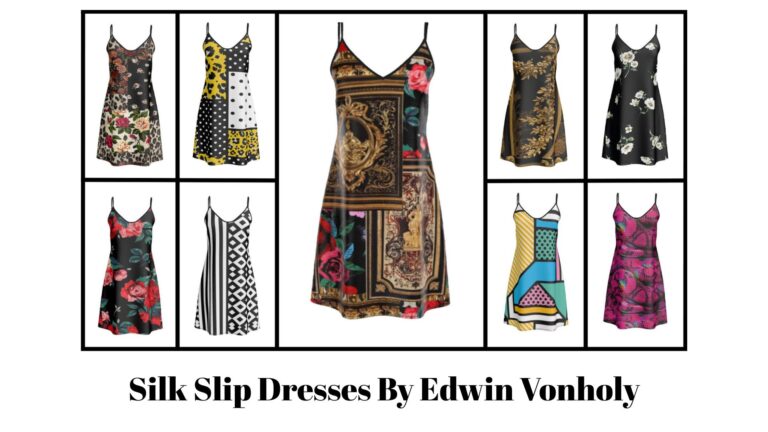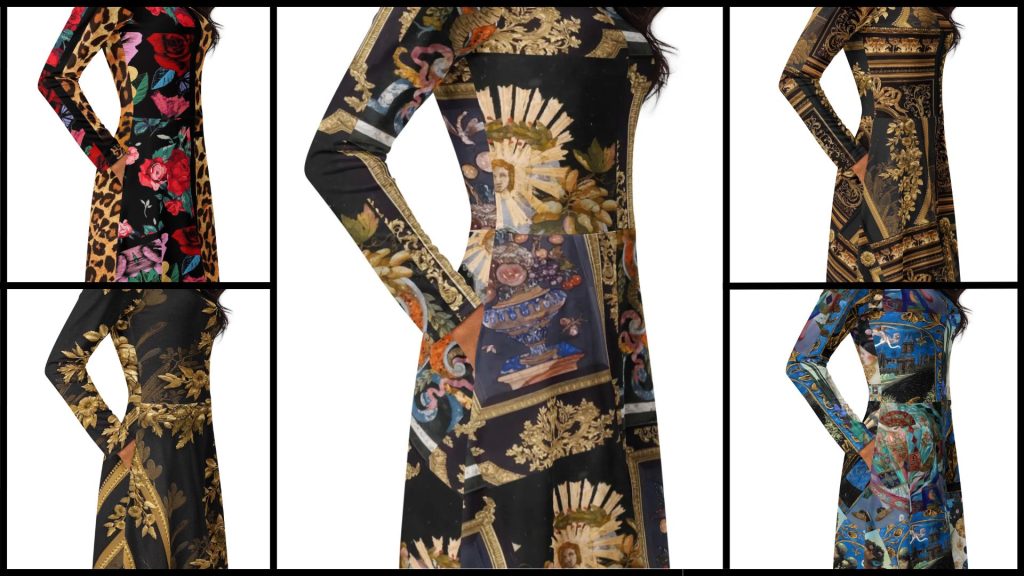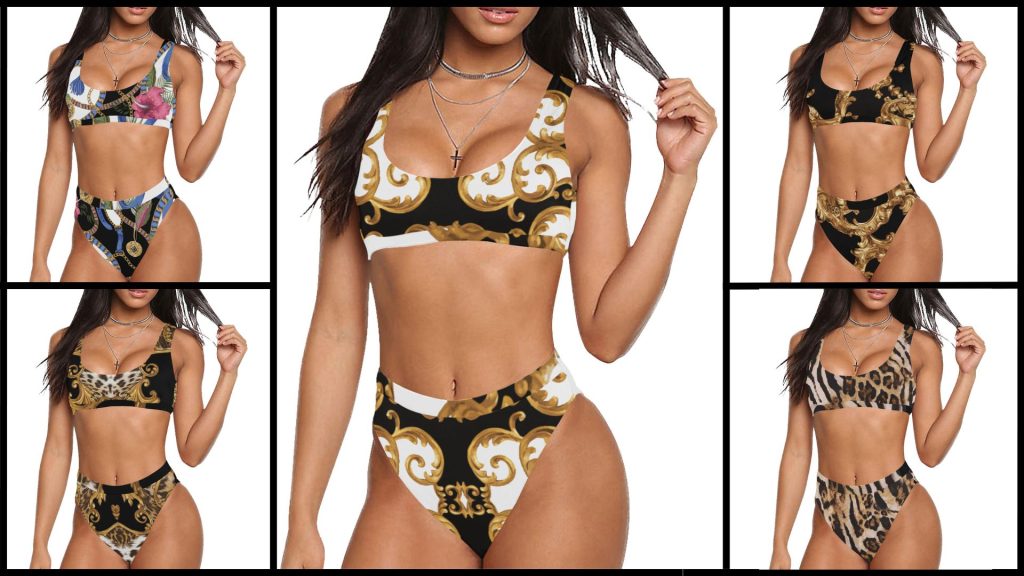The History of Vintage-Style Wedding Dresses: From Victorian to Retro
Vintage-style wedding dresses evoke timeless elegance and charm, and many brides today choose them for their weddings to pay homage to the past while celebrating their unique style. From the elaborate gowns of the Victorian era to the sleek and simple styles of the 1960s, the evolution of bridal fashion reflects social, cultural, and historical changes. In this article, we’ll take a journey through the fascinating history of vintage-style wedding dresses, from Victorian opulence to retro chic, highlighting the defining characteristics of each era and how they continue to influence bridal fashion today.
1. Victorian Era (1837-1901): Opulence and Romance
The Victorian era was a time of grandeur, and wedding dresses from this period were nothing short of extravagant. Queen Victoria’s own wedding to Prince Albert in 1840 is often credited with popularizing white wedding dresses, a trend that had previously been unheard of. Her choice to wear a white gown symbolized purity and innocence, and soon after, white became the color of choice for brides.
Design Elements: Victorian wedding dresses featured intricate lace, high collars, and long sleeves. Dresses were often made of luxurious fabrics like silk satin, taffeta, and brocade. The gowns were full-skirted, often supported by crinolines or petticoats to create a dramatic, voluminous silhouette.
Cultural Influence: The Victorian era was characterized by strict social norms, and the wedding dress reflected these values with its modesty and opulence.
2. Edwardian Era (1901-1910): Elegance and Simplicity
The Edwardian era followed the reign of Queen Victoria, and while it retained some of the opulence of the previous era, there was also a shift toward more elegant and understated styles. The wedding dress of the Edwardian period was less about excess and more about delicate refinement.
Design Elements: Edwardian wedding dresses often featured lace, silk, and satin, with a soft, flowing silhouette. The gowns typically had shorter sleeves, and the skirts were less voluminous than in the Victorian era. The “S-bend” corset created a more natural hourglass shape, with the waistline sitting lower than it had in previous decades.
Cultural Influence: This period marked the beginning of the modern wedding dress as we know it today, focusing more on style and comfort than on strict adherence to modesty.
3. The Roaring Twenties (1920s): Flapper Glamour
The 1920s, also known as the Roaring Twenties, brought about a revolutionary change in fashion, especially for women. With the rise of the flapper culture and the influence of the Jazz Age, wedding dresses became more relaxed and less formal, embracing the spirit of freedom and rebellion.
Design Elements: Wedding dresses from the 1920s were often shorter in length and featured loose, flowing silhouettes. They were made from fabrics like silk, crepe, and satin and frequently adorned with art deco-inspired beadwork, sequins, and lace. Drop-waist designs, straight lines, and minimalistic details were common, reflecting the flapper style.
Cultural Influence: The 1920s were a time of social change, with women gaining more independence and freedom. This was reflected in the wedding dress, which became a symbol of modernity and self-expression.
4. The 1930s: Glamour and Elegance
The Great Depression of the 1930s had a significant impact on bridal fashion. Despite the economic hardships, brides still wanted to look glamorous on their wedding day, and fashion responded with sleek, elegant styles that were both sophisticated and practical.
Design Elements: 1930s wedding dresses featured a more tailored, feminine silhouette. The dresses were often made from luxurious but simple fabrics like silk crepe, satin, and chiffon. The form-fitting bodices and bias-cut skirts allowed for a flattering drape, creating a smooth, streamlined look.
Cultural Influence: The 1930s were marked by the glamorous Hollywood influence, with brides looking to the silver screen for style inspiration. Wedding dresses during this time reflected the elegance of the era, often incorporating vintage lace and floral detailing.
5. The 1940s: Wartime Simplicity
The 1940s was a decade shaped by World War II, and bridal fashion responded accordingly. With fabric shortages and a need for practicality, wedding dresses became simpler and more understated, reflecting the wartime spirit of resourcefulness and austerity.
Design Elements: Wedding dresses in the 1940s featured simpler, more streamlined silhouettes with less ornamentation. Fabrics like rayon, taffeta, and crepe were used in place of luxurious silks. Shorter skirts, cap sleeves, and less elaborate detailing were common, as brides adapted to wartime conditions.
Cultural Influence: The economic strain of wartime life led to a more practical approach to wedding fashion. While still beautiful, the gowns were less extravagant, reflecting the mood of resilience and modesty.
6. The 1950s: Feminine and Full Skirts
The 1950s saw a return to extravagance in bridal fashion, influenced by the post-war economic boom and the desire for celebration and opulence. Wedding dresses became more feminine, with voluminous skirts and flattering bodices that highlighted the hourglass shape.
Design Elements: Full skirts, often supported by crinolines, were a hallmark of 1950s wedding dresses. Dresses were made from luxurious fabrics like satin, taffeta, and lace, and featured sweetheart necklines, fitted bodices, and puffed sleeves. The gowns were designed to create a dramatic, fairy-tale look.
Cultural Influence: The 1950s were a time of renewal and prosperity, and wedding dresses reflected this optimism. The focus on femininity and elegance was in line with the post-war ideal of domesticity and glamour.
7. The 1960s: Mod and Minimalism
The 1960s brought about a shift toward simplicity and boldness, as fashion became more influenced by the youth culture and the growing feminist movement. Wedding dresses of this era reflected a sense of modernity and individuality, with an emphasis on clean lines and unconventional styles.
Design Elements: The mod wedding dress of the 1960s featured shorter hemlines, simple A-line shapes, and bold details. Brides often opted for dresses with minimalistic cuts, like shift dresses, and embraced geometric patterns or clean, tailored lines.
Cultural Influence: The 1960s were defined by a desire to break away from tradition and embrace new ideas. This era saw wedding dresses become more casual and accessible, reflecting the changing societal norms of the time.
8. The 1970s: Bohemian and Free-Spirited
The 1970s were marked by the rise of bohemian style, which had a significant influence on wedding fashion. Brides in this era embraced a free-spirited, natural look that reflected the counterculture movement.
Design Elements: 1970s wedding dresses often featured flowing fabrics like chiffon and lace, with soft, ethereal designs. The gowns were characterized by bell sleeves, empire waists, and simple, relaxed silhouettes. Floral crowns, lace veils, and barefooted brides became iconic symbols of this era.
Cultural Influence: The 1970s embraced a laid-back, earthy aesthetic that rejected traditional, formal bridal fashion in favor of something more personal and relaxed.
Conclusion
From the grandeur of Victorian lace to the sleek simplicity of 1960s mod dresses, the history of vintage-style wedding gowns is rich and varied. Each era brought unique elements to bridal fashion, shaping the way modern brides approach their wedding day attire. Whether you’re drawn to the romanticism of the Victorian era or the boldness of the 1960s, vintage wedding dresses continue to offer a timeless appeal that blends history with modern bridal trends. By understanding the evolution of bridal fashion, brides can choose a gown that not only celebrates their unique style but also honors the rich legacy of wedding fashion.






